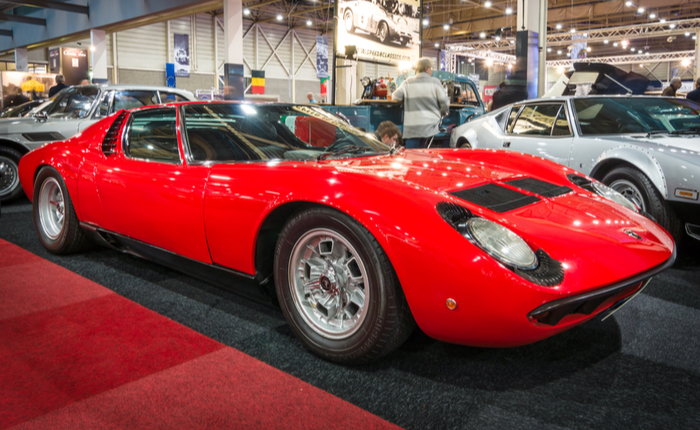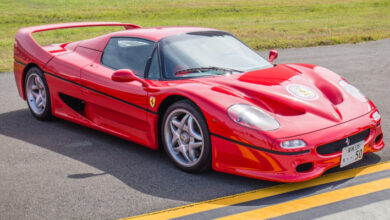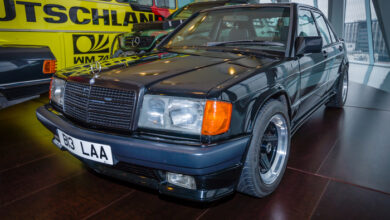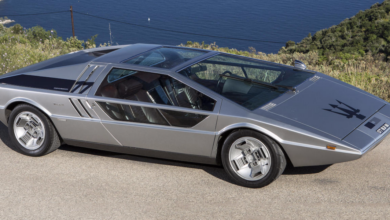Lamborghini Miura – An Icon of its Time

Upon its release in 1966, the Lamborghini Miura was the world’s fastest production car. Over 50 years later, this Italian masterpiece still defines the mid-engine sports car experience. The Miura is a connoisseur’s Lamborghini and a driving enthusiast’s dream experience.
The very soul of the Lamborghini Miura is rebellious, matching its seductive styling and bullish performance. Company engineers gave birth to the Miura in their spare time, without the approval of founder Ferruccio Lamborghini. Today, the Miura is an important piece of Lamborghini and automotive history.
Envisioning something capable of winning races while remaining usable as a road car, engineers began with the chassis design. Ferruccio Lamborghini eventually saw this prototype, the P400, as a potential marketing concept. The rolling chassis made its debut in 1965, leading people to place orders before the car even had a body.
Setting the car apart from past Lamborghini models, the Miura features a transverse-mounted, mid-engine design. With the engine behind the driver, the V12 placement is unique for its era. To conserve more space, engineers essentially combine the engine with the transmission and differential inside a singular aluminum casting.
Iconic styling always stands the test of time, but the Miura’s stylish destiny came down to the wire. Engineers could not finish test-fitting the Miura’s engine because the exterior body styling took longer than expected. Making its debut without an engine at the 1966 Geneva Motor Show, Lamborghini kept the hood under lock and key.
With the P400 concept’s bold popularity and favorable public acceptance reaching a point of no return, production became inevitable. Lamborghini chose the name Miura, after a famous Spanish fighting bull breeder. The company also redesigned their logo, which is the same one they still use to this day.
In an era saturated with beefy V8 engines, the Lamborghini Miura’s 3.9L V12 marches to the beat of a different drum. Specifications vary across models of the Miura, but the base powerplant produces 345 horsepower with 262 foot pounds of torque. The 5 speed manual transmission adds to the driving intimacy as you feel every detail of the rear-wheel drive experience.
At the time of production, Lamborghini’s Fastest Car In The World marketing campaign began burning rubber. Capable of a top speed of 280 kilometers per hour (163 mph) while going from 0 to 100 km/h (0-62 mph) in 6.7 seconds, the Miura set a new bar for sports car performance.
Of course, mentioning any Lamborghini without taking notice of its exhaust note should be a crime. In fact, the engine tone of the Lamborghini Miura carries rock star status. The revving engine heard on Van Halen’s “Panama” is from Eddie Van Halen’s 1972 Lamborghini Miura S.
The Miura’s rise to fame also includes starring on the silver screen in the original version of the 1969 film The Italian Job. Viewers instantly take notice of the beautiful Lamborghini Miura during the film’s introductory scene. Everybody wants to drive or ride in a Miura thanks to days like these, when skies are blue and fields are green.
Although you can find information on a lot of Miura models, the three most well-known are the standard Miura, Miura S and the Miura SV:
- 1966-1969 Miura P400
- 1968-1971 Miura P400S
- 1971-1973 Miura P400SV
The first Miura production model is also known as the P400. Lamborghini launched the Miura with great success, producing 275 of them despite a steep price tag. Of course, being able to go from 0 to 60 miles per hour in 6.3 seconds certainly did not hurt sales in 1966.
After the initial P400 model came the Miura S, or the P400S. This model features convenient power windows as well as stylish exterior chrome trim. Engine output increased by about 20 horsepower in Lamborghini Miura S models.
The most famous Lamborghini Miura is the P400SV edition. With different cam timing and component tuning, the Lamborghini Miura SV produces 380 hp with 295 lb-ft of torque. Notable SV differences are a lack of “eyelashes” around the headlamps and different taillights.
Only 764 Lamborghini Miuras roared to life during its production years, beginning in 1966 and ending in 1973. To say they are difficult to find in decent condition is an understatement. Finding a Miura in pristine condition is the kind of search that usually begins with signing a blank check.
With that being said, collectors are still able to locate Lamborghini Miuras for sale with a wide range of pricing available. To those who are able to locate one, sitting behind the wheel of a Miura is not a bad way to spend a Sunday afternoon.



